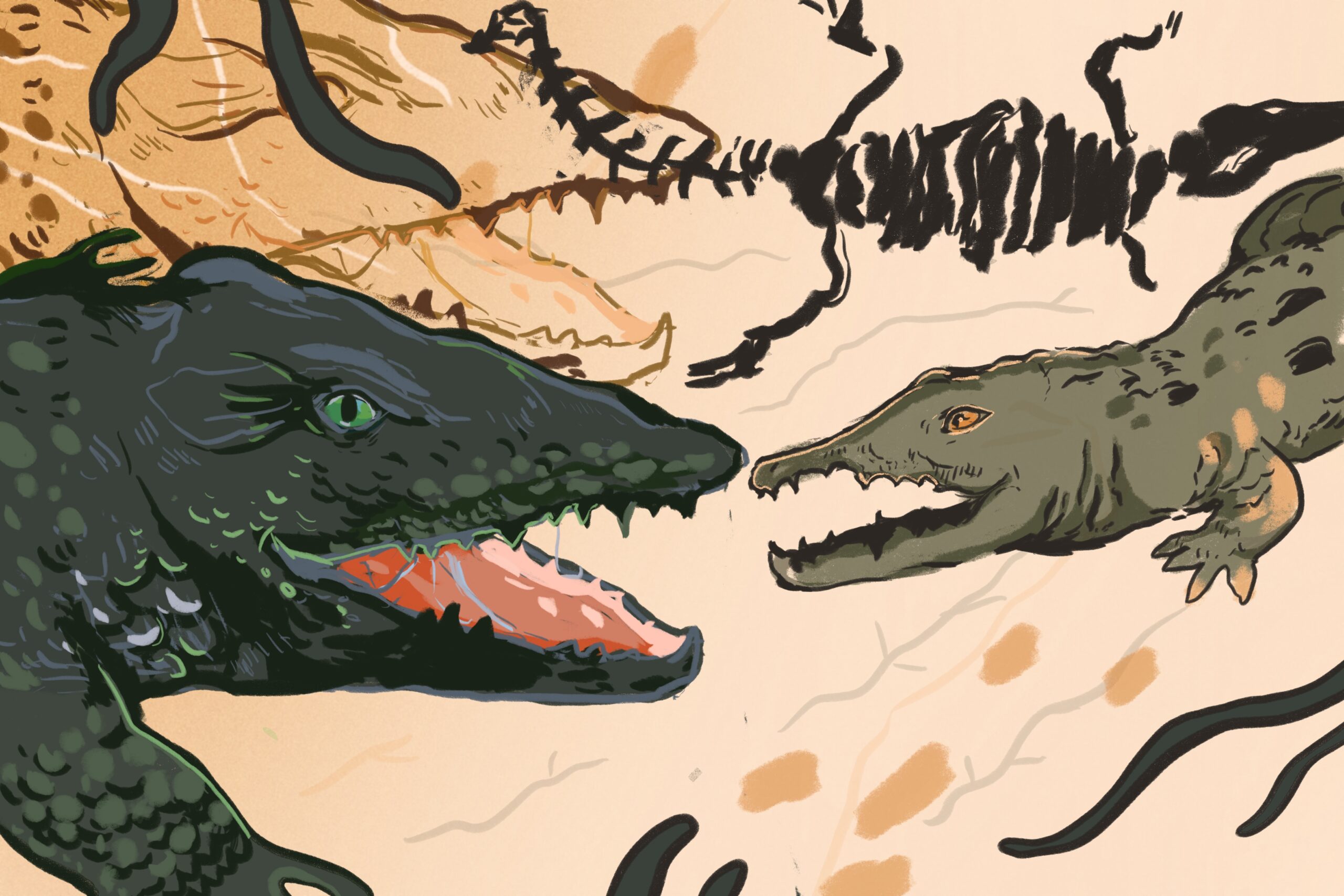
A new ancient crocodile relative has been discovered, according to a co-publication in the scientific journal Royal Society Open Science by Carleton professor and paleontologist Michael Ryan.
This discovery is the oldest fossil record of a bone structure in crocodiles’ mouths that allows them to kill prey underwater, according to Ryan. The discovery of the new crocodile relative, Amphicotylus milesi, is the first and only specimen uncovered and named of the milesi genus.
While the crocodile fossil was first uncovered in Wyoming, U.S. in 1993 by Western Paleontological Laboratories, PhD student Junki Yoshida at the Hokkaido University Museum in Japan was the first to formally analyze Amphicotylus milesi as part of his graduate studies in 2017.
“Our research brings new perspective on the early dives of the extinct ancestor of today’s crocodilians,” Yoshida said.
Ryan said the research team curious to find out how modern crocodiles evolved to have the ability to breathe air into their lungs while keeping their mouths open underwater to catch prey.
A bone present in humans and vertebrates, called the hyoid, extends further out in the back of crocodiles’ throats to support their tongue. Crocodiles also have a soft tissue feature in the back of the throat, the gular valve, that they can raise to close the nasal passageway off from the mouth cavity. The hyoid along with the gular valve allows crocodiles to hold and kill prey underwater without drowning themselves.
As long as their nostrils stay above water, this combination means crocodiles can keep their mouth open and catch prey underwater.
Amphicotylus milesi is the oldest known fossil record of the combination of the hyoid and gular valve in crocodiles.
Ryan and Yoshida worked at the Hokkaido University Museum with associate professor of paleontology Yoshitsugu Kobayashi.
Over the COVID-19 pandemic, they collaborated by sharing 3D images, digital data and photographs virtually, as travel was restricted between Canada and Japan. The team used 3D technology to reconstruct the crocodile’s skull to better understand the fossil.
To learn more about crocodile evolution, Ryan said more fossils need to be found. While the fossil Ryan worked on is the only one uncovered for now, he said Amphicotylus milesi might be more common than people think.
“Now that [we have] seen what this fossil looks like in the fossil record, people can go back through their museum collections and say, ‘Oh, I misidentified that fossil,’” Ryan said. “Hopefully, [the number of fossils] will be a dozen or a hundred down the road.”
Featured image by Sara Mizannojehdehi.





